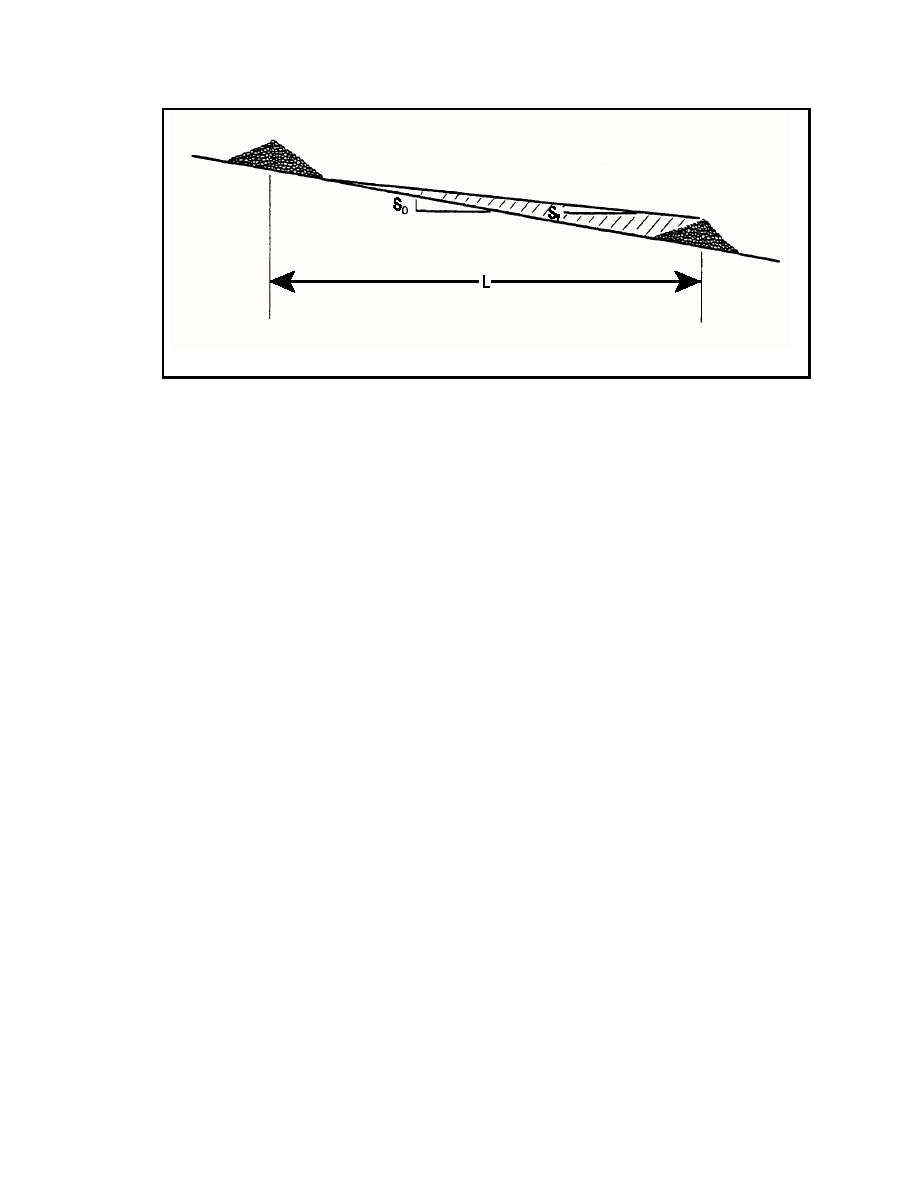
Grade Stabilization
Figure 12.1 Spacing of Grade Control Structure (adapted from Mussetter, 1982)
where H is the amount of drop to be removed from the reach, So is the original bed slope, Sf
is the final, or equilibrium slope, and x is the length of the reach (Goitom and Zeller, 1989).
The number of structures (N) required for a given reach can then be determined by:
N = H/h
(12.2)
where h is the selected drop height of the structure.
It follows from Equation (12.1) that one of the most important factors when siting
is also one of the most difficult parameters to define with any reliability. Failure to properly
define the equilibrium slope can lead to costly, overly conservative designs, or inadequate
design resulting in continued maintenance problems and possible complete failure of the
structures.
The primary factors affecting the final equilibrium slope upstream of a structure
include: the incoming sediment concentration and load, the channel characteristics (slope,
width, depth, roughness, etc.), and the hydraulic effect of the structure. Another complicating
factor is the amount of time it takes for the equilibrium slope to develop. In some instances,
the equilibrium slope may develop over a period of a few hydrographs while in others, it may
take many years.
There are many different methods for determining the equilibrium slope in a channel.
These can range from detailed sediment transport modeling to less elaborate procedures
involving empirical or process-based relationships such as regime analysis, tractive stress, or
minimum permissible velocity (see 3.1.3). In some cases, the equilibrium slope may be based
solely on field experience with similar channels in the area. Regardless of the procedure used,
the engineer must recognize the uses and limitations of that procedure before applying it to
249




 Previous Page
Previous Page
